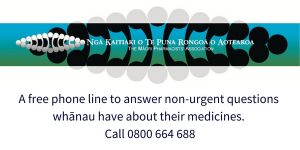Mesalazine is used to treat bowel conditions such as ulcerative colitis and Crohn's disease. It works by reducing inflammation in your gut and may lessen symptoms of pain and diarrhoea. It allows the damaged areas to heal and helps to prevent symptoms from flaring up.
Mesalazine tablets and granules are specially designed to release mesalazine in your gut, to treat inflammation. In Aotearoa New Zealand there are different brands of mesalazine tablets and granules.
- Asacol tablets (400 mg and 800 mg)
- Pentasa tablets (500 mg)
- Pentasa granules 1 gram per sachet.
The different brands of tablets are designed differently. Don't change brands without checking with your doctor or pharmacist. If you're changed to a different brand of tablet, let your doctor know if you notice any changes to your symptoms when you change brands.
Note: Mesalazine is also available as suppositories and enemas which are used to treat inflammation in the lower bowel or rectum. Read more about mesalazine suppositories and enemas.
May 2024: Your box of Asacol brand of mesalazine 800 mg tablets may look different
|









